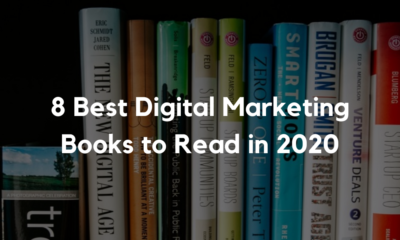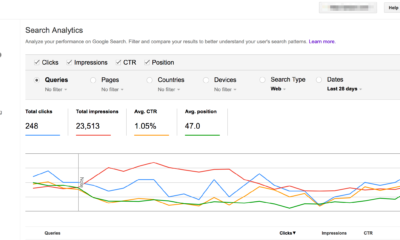Business
The Guide to Diversity and Multicultural Marketing in Bali, Indonesia

An effective multicultural marketing campaign has a number of moving parts, making it one of the most challenging marketing campaigns ever. However, brands have been using it effectively for their advantage not only when they have to market in a foreign land, but also when they have to do it at home. But, what exactly makes a multicultural marketing campaign a success? In this post, we discuss the challenges and best practices of diversity marketing to help you give a solid foundation to work on. So, stay with us till the very end. Let’s get started!
What is Diversity Marketing?
A country is made of different cultures. The cultures are made of different values driven by different experiences and expectations. The different cultures will make the country divided into several subgroups based on ethnicity, age, gender, religion, family size, profession, and whatnot. And that exactly gives birth to diversity marketing.
Diversity marketing is the kind of marketing strategy that allows a brand to take all these factors into consideration and design a successful marketing strategy. Creating such strategies helps the brands improve their ability to communicate with these diverse groups. It uses different forms of communication to reach specific focus groups in a multicultural market.
Here are some of the well-known brands that have been employing diversity marketing across the world.
- McDonald’s
- Proctor and Gamble
- Target
- Saturn
- Harley Davidson
- AT&T
- Nike
- Chevrolet
These big companies had to change how they function in different countries, why wouldn’t you? Let’s get deeper into the content and figure out the different aspects of multicultural marketing that you will have to consider.
Challenges of Marketing and Campaigning in Bali, Indonesia.
Here are the challenges of marketing and campaigning to a multicultural audience in Bali. Let’s discuss them in detail.
1. Economic Differences
The economic difference is one of the most blatant challenges. Marketing to focus groups that have different buying capacity can make it challenging to put your product in the market like Bali. Brands have to consider the difference between the haves, the have nots, and the have-a-lots while designing their marketing campaign. This will require a digital agency to understand which part of the focus group will make the most impact.
2. Rapid Technological Change
The technological advancement across the Asian market is an inspiration for other under-developed or developing nations. This is also a huge challenge because having access to the new technology, the customers have information about other products in the market. Not just that, being connected to the internet, they know what other people are talking about when it comes to products. The challenge of creating a clean image of a product in Bali is a challenge in itself.
3. Regional Differences
The regional differences across the country is a challenge in itself. Brands will have to create marketing campaigns that are directed on a more region-to-region basis. No matter which country you choose across Asia, you will find that the campaigns have to be manipulated on the basis of different countries as well as the sub-regional clusters that happen to be influencing the different cultures across these Nations. As a digital agency in Bali, Indonesia; you will have no exception to that.
4. A Mobile Workforce
As we all know, the workforce across all the countries in Asia is getting more aware globally. This is a result of an increase in the use of mobile technologies that have allowed the multi-diverse population to limit the results of brain drain and retain their talent. The Global awareness of the workforce is getting more mobile. This can also stand as a challenge for brands that are new to the market in these countries.
5. Post-Americanism
The Asian subcontinent is growing at a high speed without any kind of push from developed nations like the United States. The countries are quite independent in how they are functioning and are quickly getting on the path of becoming a developed nation themselves. This feeling of independence is quickly getting identified with the focus groups in the country making the brands think more about their marketing campaigns.
6. Corporate Culture Vs. National Culture
And then there is a focus group that prioritizes personal growth over other things. There has been an increasing notion between the native Indonesians to work at corporates or multinational companies where they will be more respected and appreciated. Brands will have to create marketing campaigns that respect the priorities of the focus groups in Bali and ensure there is no clash between their national and personal growth.
7. Communication Patterns
Lastly, one of the most difficult challenges brands and agencies will have to face in Bali is working with people in the country to better understand cultural diversity. You have to learn to think like an Indonesian. The inclusion efforts have to be significant and something you should rely on while drafting your marketing campaign. You have to ask the right questions and make decisions that are in the best interests of your brand and the people you are targeting.
Best Practices of Multicultural Marketing
Here are the best practices of multicultural marketing that your digital agency in Bali may need to execute for a successful campaign.
1. Analyze Data
Analyzing data from all reliable sources is necessary if you want to have a vast repository of data in different consumer segments. One of the best ways to do that is by using your customer relationship management and data management platforms. Make sure you come by this data with advanced analytics in order to identify segments in the market that are easily targetable. This will help you lay a solid foundation for the multicultural marketing strategy.
2. Employ Third-Party Research
While you’re gaining all the data from sources like CRM and DMP, you will also have to take the help of data insights using third-party research and focus groups. This is mainly because CRM and DMP do not provide a complete picture of consumer sentiment and preferences. Third-party customer insights will help you conduct successful A/B tests and create using the right messaging, visual elements, and products.
3. Plan Your Execution Carefully
Another thing that you will have to take care of during a multicultural marketing campaign is the channel selection and a solid activation of your marketing calendar. A huge part of the success of a multicultural marketing strategy depends on the kind of channel you choose. You will have to shortlist the right traditional and interactive platforms, making sure your target audience is there on it. The marketing activation calendar takes care of the timelines, preferred days of execution, and the overall frequency of your marketing campaigns.
4. Ensure Diversity and Inclusion
The decision-making process should have proper space for considering diversity and inclusion. This will help you ensure that no messages are broadcasted that might in some way or other be perceived as offensive by a focus group. This can be done effectively by putting in control a marketing head that is diverse and well-versed with the economic, cultural, and other stereotypes of the region you are targeting.
5. Optimize in Real-Time
You have to monitor the campaigns constantly and allow for real-time optimization. You should also not eliminate the option of re-launching a product in the market if things didn’t go as expected the first time. Most multicultural marketing campaigns aren’t one-off. They require consistent improvements in messaging, visuals, target audience, and location.
Wrapping Up
Multicultural marketing is challenging in its nature. This is because you are trying to target different focus groups and influencing them to try your product and services. The concept in itself is quite demanding and would require you to take a deep dive into the existing customer segments, and to find meaningful ways to strengthen the relationship between the brand and it’s potential customers. We hope this post helped you understand multicultural marketing and the challenges it brings with itself, especially in a country like Indonesia.
-

 Domains6 years ago
Domains6 years ago8 best domain flipping platforms
-

 Business5 years ago
Business5 years ago8 Best Digital Marketing Books to Read in 2020
-

 How To's6 years ago
How To's6 years agoHow to register for Amazon Affiliate program
-

 How To's6 years ago
How To's6 years agoHow to submit your website’s sitemap to Google Search Console
-

 Domains5 years ago
Domains5 years agoNew 18 end user domain name sales have taken place
-

 Business6 years ago
Business6 years agoBest Work From Home Business Ideas
-

 How To's5 years ago
How To's5 years ago3 Best Strategies to Increase Your Profits With Google Ads
-

 Domains5 years ago
Domains5 years agoCrypto companies continue their venture to buy domains








